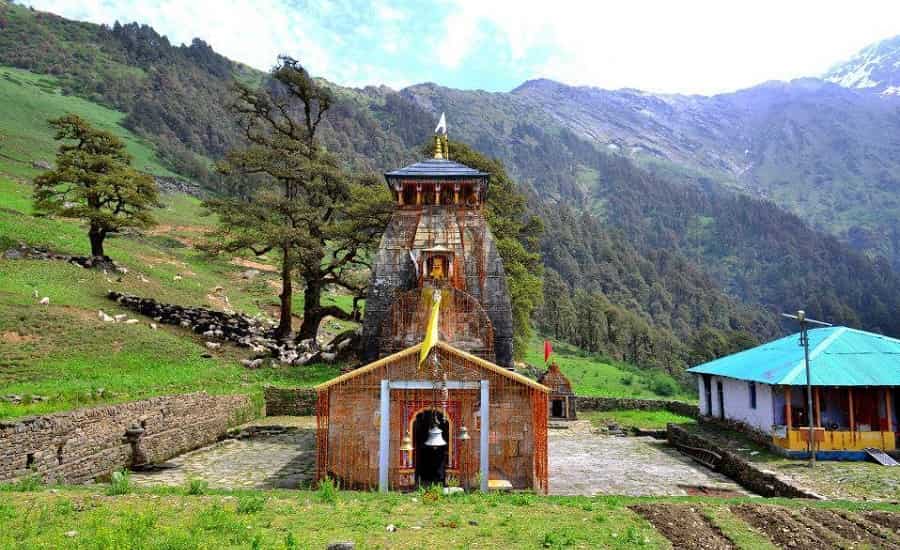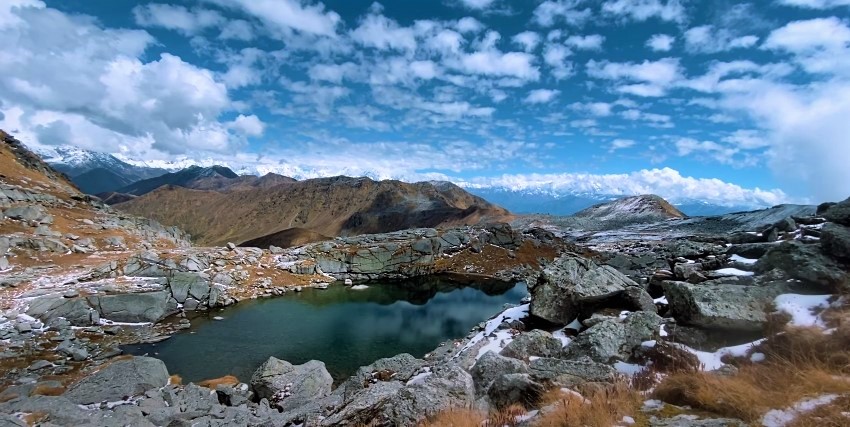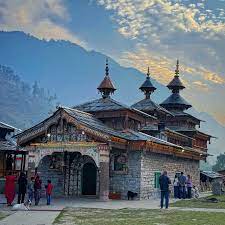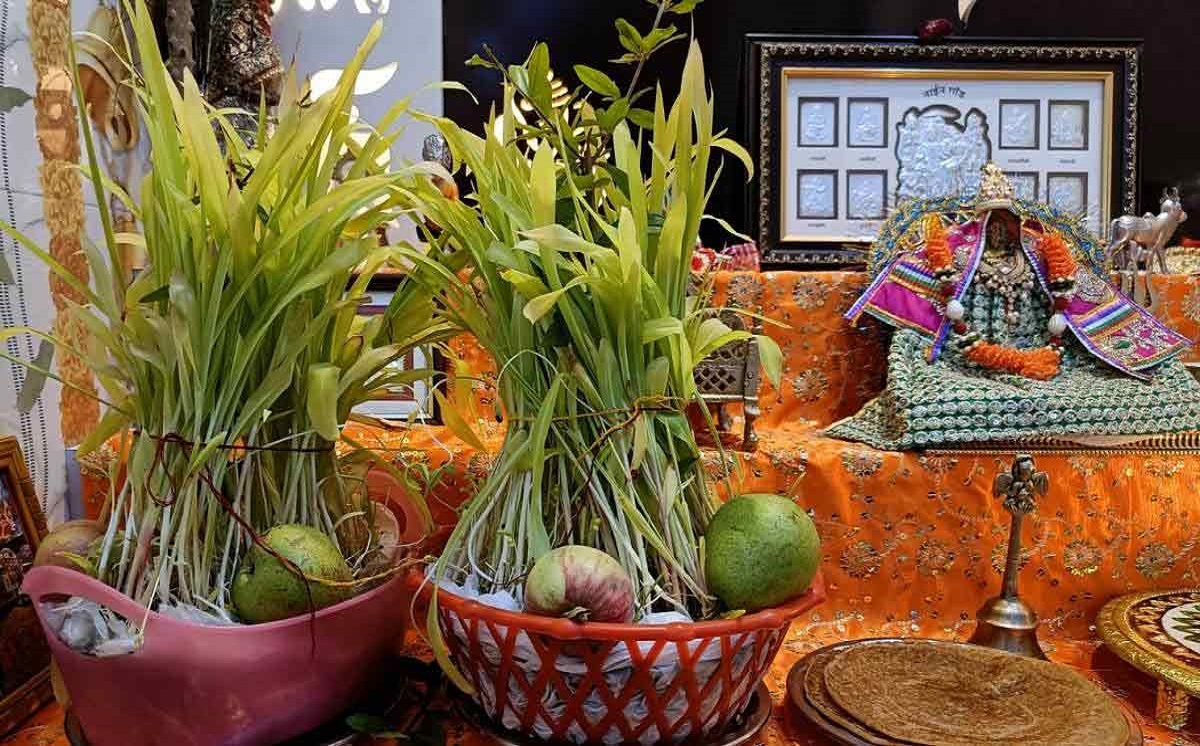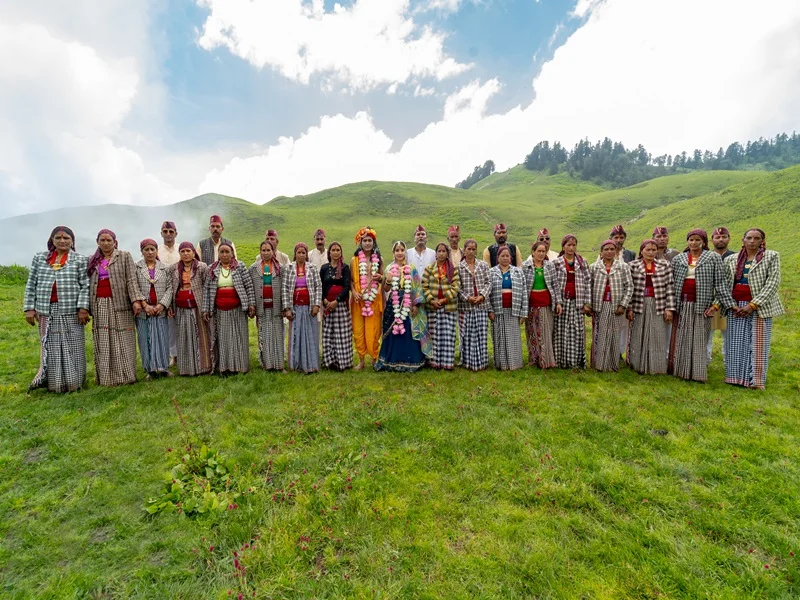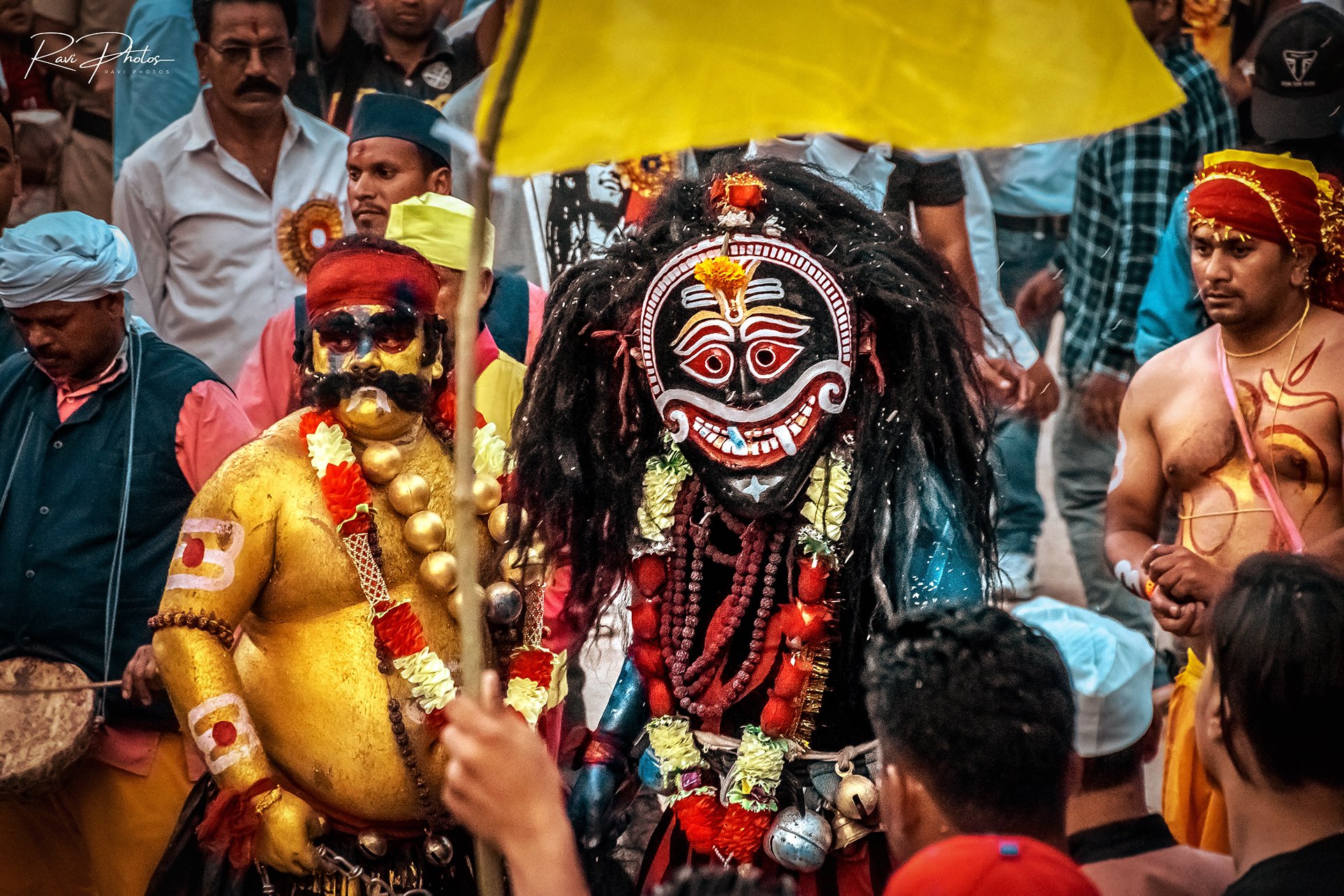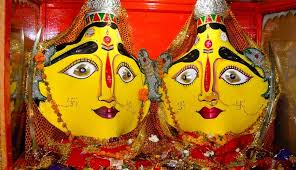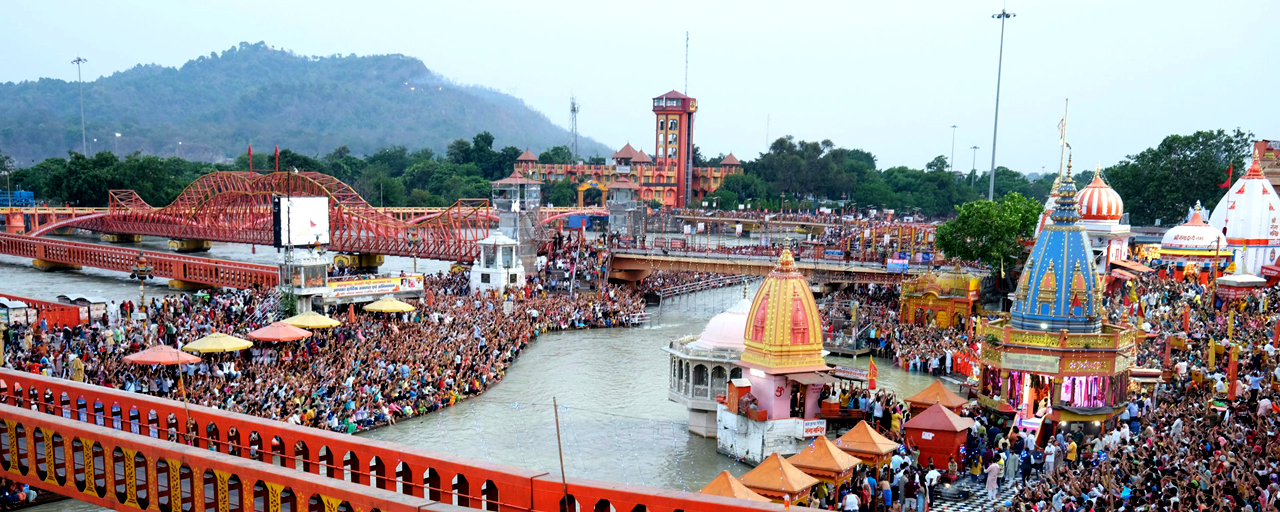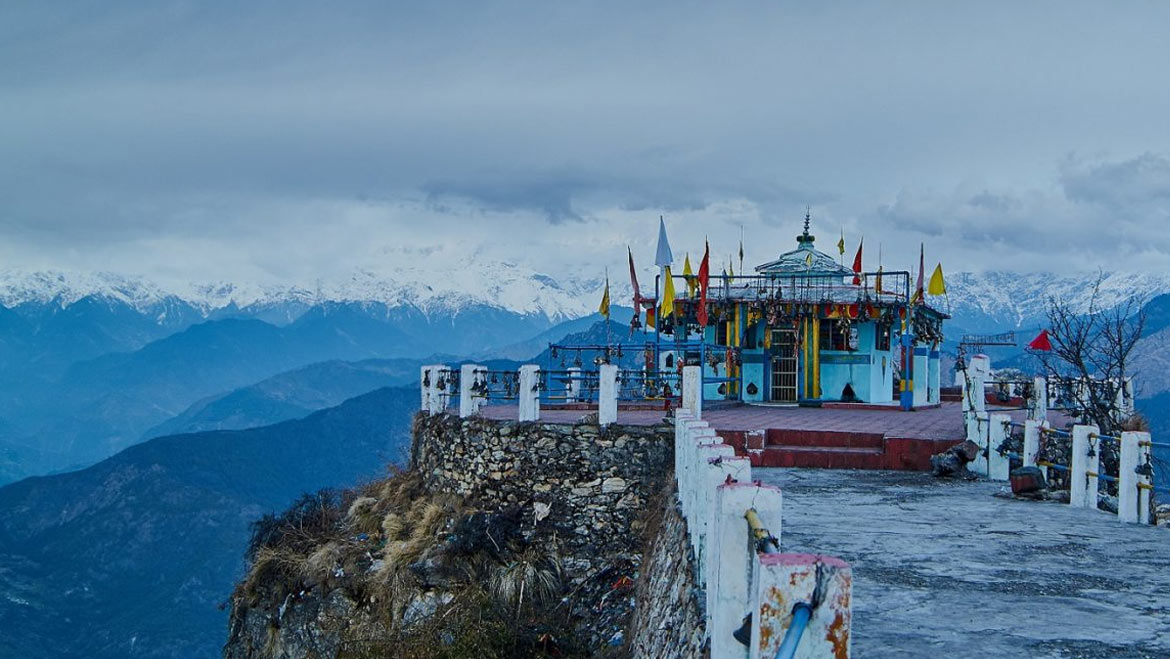The First Glimpse
The climb is long. From Ransi, the road just ends, and your feet take over. Forest, stone steps, wooden bridges across streams that don’t stop talking. You breathe heavy, you stop often, but you keep going. And then suddenly, after all that, you see it.
The temple. Small. Stone. Flags fluttering in the wind. And behind it, the white shoulders of snow peaks. That’s where the Madhmaheshwar Mela takes place. No big gates, no giant tents, just the mountain holding a shrine and people arriving one by one, or in groups, carrying faith that feels heavier than their bags.
Where You’ve Reached
This is Madhmaheshwar, one of the Panch Kedar (पंच केदार) shrines. Shiva lives here, in his navel, the middle part. The legend says that when the Pandavas came seeking him after the war, he turned into a bull and disappeared into the earth. But his body reappeared in pieces across five places. Kedarnath, Tungnath, Rudranath, Kalpeshwar, and here.
Locals don’t recite it like a story from a book. They tell it in half sentences while you rest on a stone wall. “यहाँ उनका नाभि है,” someone says. And then they fall silent, because up here, the silence does the rest of the explaining.
The Journey Is the Mela Too
The mela is tied to the season. For six months, snow blocks the path. The idol of Madhmaheshwar rests in Ukhimath. When spring loosens the mountain, usually in April or May, the journey begins. The Chal Vigrah (चल विग्रह) a symbolic idol is carried from Ukhimath all the way to Madhmaheshwar.
It isn’t just priests. Villagers walk alongside. Children, too, run and then rest. Songs rise. Bells are rung. The path itself becomes a ritual. By the time you reach the temple with them, you realize the mela doesn’t begin in the courtyard. It begins miles before, with every step on the trail.
The Temple Grounds
When the idol reaches the temple, the courtyard fills. It’s not huge, just an open space with stone slabs worn smooth by centuries of feet. Priests begin the aarti. Lamps glow against the dark stone walls. The smell of incense, mixed with the cold, sharp air, lingers in your nose.
People press forward. Old women in wool shawls, young men still sweating from the climb, shepherds with weathered faces. Some bow deeply, some just fold their hands and look. A shout of “हर हर महादेव!” bursts out, and the sound bounces off the cliffs like the mountain itself answered back.
And yet, it’s not noisy. Even with the crowd, there’s a strange calm.
What the Mela Feels Like
It isn’t a mela of giant fairs. It’s smaller, earthier. Around the temple, people sit in groups, unpacking food wrapped in cloth. Someone pours tea from a steel flask, someone else hands around dry rotis. Children chase each other across the meadow, their laughter carried by the wind.
A few locals set up makeshift stalls. Nothing fancy just steaming cups of chai, pakoras fried on a blackened pan, wool socks knitted by hand. If you’ve climbed all day, even that chai feels like nectar.
As evening falls, the meadow turns gold. The sound of the ढोल starts, steady and deep. Some sing. Some just listen. The mountains darken, the temple lamps glow brighter, and you realize why people call this a mela. Not because it’s crowded, but because it gathers everything people, food, stories, and prayer into one place.
Why They Come
For villagers, it’s a duty. They’ve been walking here long before trekking shoes and backpacks existed. Families carry baskets of flowers, ghee, and grains. They don’t call it a pilgrimage. They call it “जाना मेला में.”
For trekkers, maybe it begins as an adventure. A steep climb, a notch on the map. But ask them when they sit in the courtyard, quiet and tired, and they’ll tell you it feels different here.
For the older ones, it’s a memory for the young, a discovery. For all, it’s return.
If You Plan to Go
When: The mela happens when the temple reopens, late April or May. The shrine stays open till October.
Where: Madhmaheshwar Temple, Gaundar village, Rudraprayag district, Uttarakhand.
Getting there:
Drive till Ukhimath.
From there, the road to Ransi or Aktolidhar.
Then trek 16–18 km via villages and forests.
Carry: Woolens even in summer (nights are cold), robust shoes, water, easy food, coins (no ATMs).
Expect: A lengthy trek, meadows, streams, locals taking walks beside you, a stone temple at the cease, and the mela, quiet, grounded, unforgettable.
Why It Matters
Many melas are built for show. This one isn’t. There are no bright lights, no giant loudspeakers, no plastic toys. Just a temple, a mountain, and people who still walk for days because they believe.
It matters because it ties effort to faith. Because here, you earn the darshan with every step. Because when you sit in that courtyard, tired but at peace, you understand that sometimes devotion isn’t shouted, it’s walked.
Closing
When the mela ends, pilgrims start walking back. The meadow empties, the bells soften, the mountain reclaims its silence. But what you carry stays longer. The taste of hot chai at altitude, the echo of “हर हर महादेव,” the cold stone under your palm.
The Madhmaheshwar Mela isn’t about spectacle. It’s about presence. About being part of something that doesn’t need to change to feel alive.
And when you go away, you recognize that the climb going into reverse is lighter. Because a part of you remains up there, sitting in the front of the temple, watching the lamps glow against the snow.

